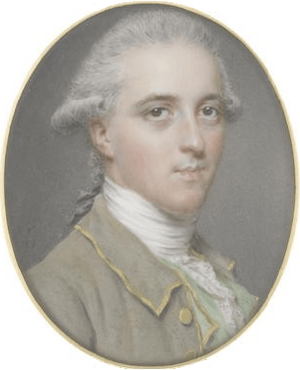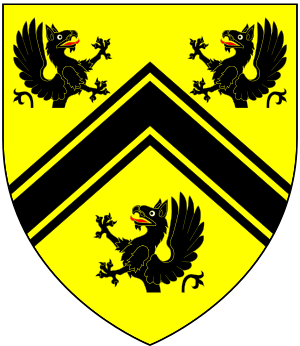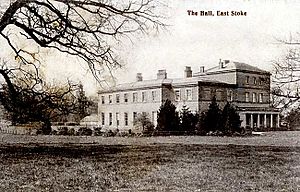Sir George Smith, 1st Baronet facts for kids
Sir George Smith, 1st Baronet (1714–1769) was an important member of the Smith family from Nottingham, England. His family started Smith's Bank in Nottingham way back in 1658. Sir George lived at Smith House in Nottingham, which is now known as Bromley House. He also had a country home called Stoke Hall in East Stoke, Nottinghamshire.
On October 31, 1757, he was given the special title of a baronet. This meant he became "Sir George Smith, 1st Baronet, of East Stoke in the County of Nottingham." A baronet is a hereditary title, like a knight, but it can be passed down through the family.
Contents
Family Background and Banking Roots
Sir George Smith was the oldest son of Abel Smith I (1686–1756). His grandfather was Thomas Smith I (1631–1699), who was the person who first started Smith's Bank in Nottingham. This bank grew to be very successful.
Sir George had two younger brothers. One was Abel Smith II (1717–1788). Abel II's son, Robert Smith, later became Lord Carrington. Another brother was John Smith (born 1716).
His mother was Jane Beaumont (1689-1743). She came from a family in Chapelthorpe, Yorkshire.
Sir George's Marriages and Children
Sir George Smith was married two times during his life.
First Marriage to Mary Howe
His first wife was Mary Howe (1726-1761). Mary was the only daughter of Major William Howe (1699-1733). Mary's mother, Elizabeth Pauncefote, was from a wealthy family in Gloucestershire.
Mary Howe's grandfather was Lieutenant-General Emanuel Scrope Howe (c.1663-1709). Interestingly, Emanuel Scrope Howe's mother was Ruperta, who was the daughter of Prince Rupert of the Rhine. Prince Rupert was the grandson of King James I. This means Sir George's first wife had a connection to the royal family!
With Mary, Sir George had several children, but only one survived to adulthood:

- Sir George Pauncefote-Bromley, 2nd Baronet (1753–1808). He took on the important role of High Sheriff of Gloucestershire in 1775. A High Sheriff was a top official in a county, responsible for law and order.
In 1778, he changed his last name to Bromley. Later, in 1803, he added Pauncefote to his name as well. This was because he inherited land from his mother's family, the Pauncefotes.
In 1778, the 2nd Baronet married Esther Curzon. She brought a large amount of money with her when they married. Esther was the daughter of Assheton Curzon, 1st Viscount Curzon (1730-1820).
Sir George and Esther had a son:
-
- Admiral Sir Robert Howe Bromley, 3rd Baronet (1778–1857). He became an admiral in the navy.
Second Marriage to Catherine Vyse
In 1768, Sir George Smith married for a second time. His second wife was Catherine Vyse (died 1786). She was the daughter of William Vyse, who was an important church official in Lichfield.
Remembering Sir George Smith
There is a special monument in St Oswald's Church, East Stoke that honors Sir George Smith. This monument shows his family's coat of arms. It also shows the coats of arms of his wives' families, Howe and Vyse.
The monument says: "This is to remember Sir George Smith, Baronet, of Nottingham and Stoke Hall. He passed away on September 5th, 1769, at 55 years old. It also remembers Mary, his first wife, who was the only daughter of William Howe. She passed away on May 18th, 1761, at 35 years old. They had children named Howe, May, and Jane, who all died when they were very young. They are buried in the vault below this monument with their father and mother. George, their only child who survived, had this monument built to show his love for his parents."





